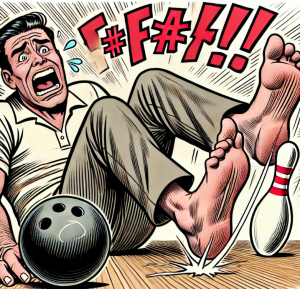
The Surprising Link Between Your Feet and Back Pain
It’s an ordinary day. You’re walking, standing, or maybe sitting at your desk. But suddenly, your lower back tightens up, and the discomfort settles in. Low back pain (LBP) — it’s a common problem that sneaks up on millions of people worldwide. But what if I told you that the culprit might not be your back at all? It might actually be your feet.
Yes, your feet.
Recent research has uncovered an important connection between the alignment of your lower limbs and the back pain you experience. Understanding this link could be the key to preventing and managing LBP in ways you’ve never considered.
Why Lower Limb Alignment Matters for Your Back
Imagine your body as a chain, where each link represents a different part of your anatomy. If one link — like your feet or knees — is out of place, it disrupts the entire chain, leading to problems further up the line. The recent meta-analysis by Abbasi and colleagues (2024) confirms this, showing that misalignments in your lower limbs can significantly increase your risk of developing LBP.
But how does this happen?
When your feet aren’t properly aligned — think flat feet or excessive pronation (rolling inward) — it alters the way you walk. This misalignment can cascade upward, affecting your knees, hips, pelvis, and, eventually, your spine. Over time, this uneven wear and tear can cause pain in your lower back. And while the idea of foot problems causing back pain might seem far-fetched, the evidence is clear: those with flat feet or abnormal lower limb rotation are far more likely to experience LBP than those without.
The Domino Effect: How Your Feet Influence Your Spine
Let’s take a closer look at the chain reaction that occurs. Imagine walking on a surface that tilts slightly inward — just enough to throw off your balance. To compensate, your knees start rotating inward, and your hips follow suit. Before you know it, your lower back is working overtime to stabilize your body, leading to strain, fatigue, and, eventually, pain. This is what happens when your feet aren’t aligned properly.
According to the research, individuals with flat feet are significantly more likely to develop LBP. In fact, one study included in the meta-analysis found that the prevalence of LBP was much higher in those with moderate to severe flat feet compared to those with normal foot arches. What’s more, women, particularly those who are older or overweight, seem to be at an even greater risk.
But it’s not just flat feet. Increased internal rotation of the hips and knees, as well as poor ankle alignment, were also linked to a higher likelihood of back pain. The researchers suggest that these misalignments disrupt the natural movement of your body, forcing your lower back to compensate in ways it wasn’t meant to, which can lead to chronic discomfort.
From Head to Toe: Real-World Impacts
Consider this scenario: a young athlete starts noticing recurring lower back pain after practice. Despite focusing on core strength exercises and stretches, the pain persists. After consulting with a specialist, they discover that the root of the problem isn’t their back at all — it’s their feet. Years of running with slight foot pronation have altered their knee and hip alignment, which has caused their lower back muscles to strain.
It’s not just athletes. Office workers, factory employees, parents, and anyone on their feet for long periods are susceptible. Misalignment in your feet can build up over time, causing persistent LBP even if the pain doesn’t immediately start in your lower back.
Breaking the Cycle: Solutions to Protect Your Back
So what can you do about it? Understanding the connection between lower limb alignment and back pain opens up new possibilities for prevention and management.
One effective strategy is to look at your feet and consider interventions like custom orthotics. These specially designed insoles can correct foot misalignments, distribute your weight more evenly, and reduce the stress placed on your knees, hips, and back. Studies have shown that orthotics can be particularly effective for people with flat feet, helping to relieve pain and improve overall posture.
Additionally, physical therapy focused on lower limb alignment can work wonders. Strengthening exercises for your hips, knees, and ankles can help restore proper alignment and improve the way you walk. For example, focusing on improving your hip range of motion and strengthening the muscles around your knees can help reduce the strain on your lower back.
It’s also important to evaluate your footwear. Shoes that offer proper support, especially for people who spend long hours standing or walking, can make a significant difference. The wrong shoes can exaggerate misalignment issues, worsening your LBP over time.
A Step Towards Prevention
Prevention is always better than treatment. If you haven’t experienced LBP yet but have risk factors like flat feet or knee misalignment, now is the time to act. Regularly check your posture and gait. Do your feet roll inward when you walk? Are your knees knocking together? These subtle signs can be early indicators that something’s not right.
Consider working with a physical therapist or podiatrist to assess your alignment and catch issues before they turn into chronic pain. They can provide personalized exercises and footwear recommendations to keep your lower limbs — and your back — in good shape.
Join the Conversation
How has lower limb alignment affected your experience with back pain? What steps have you taken to correct it? Share your thoughts in the comments below!
Explore and Learn with Science
Dive into groundbreaking research and inspiring stories with ‘This Week in Science’! Perfect for teachers and science enthusiasts, our free weekly newsletter expands your horizons in teaching and learning. Join us today and reshape your engagement with science. If you liked this blog, please share it! Your referrals help This Week in Science reach new readers.



